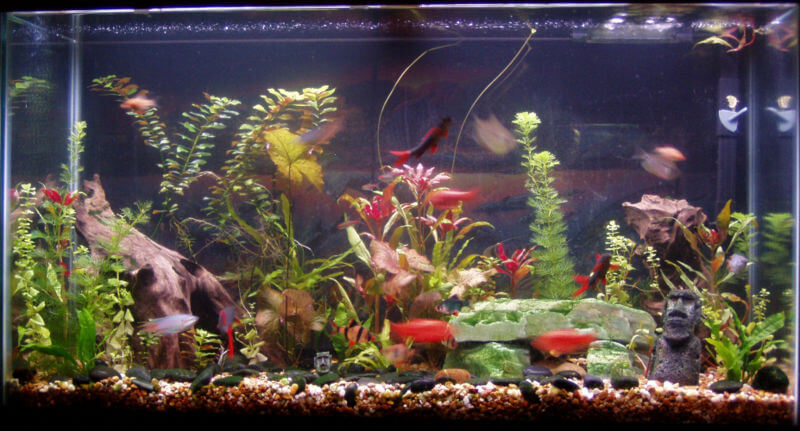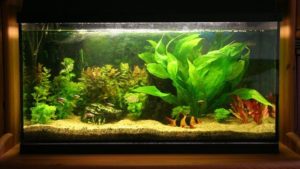Sharing is caring!
When it comes to what we use to cover our aquariums, it’s best to take a step back and understand the different types and purposes. Aquarium hoods, lids, and canopies have different meanings and usages. Although many aquarists use these terms interchangeably at times. Also, all 3 of these options can be used together or in any combination of each other.
When to cover an aquarium
Whether it’s simply aesthetics, hiding equipment, or preventing evaporation, you have options to tackle these areas. There are several reasons you’d want to have something covering the top of your tank. The most important of these would be to keep your fish in your tank. Although there are species of fish that aren’t known to be jumpers, any fish can be startled and make the leap. Some popular community fish are known jumpers, such as Hatchets, and without a cover, you are sure to lose fish from jumping right out of the top of your tank.
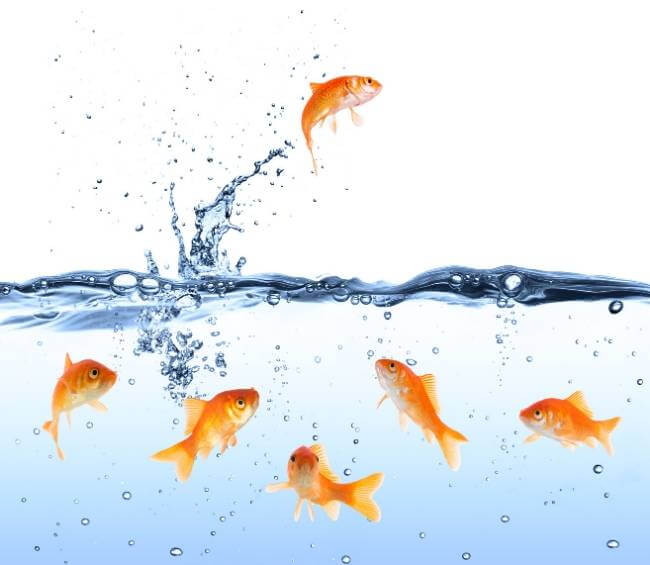
If fish can jump out then that means things can fall in. Without some type of covering you are subject to these types of mishaps. Imagine feeding your fish and the food container slips your hands, whoops, there goes the entire container right in your aquarium. Cleaning out a whole container of fish food can be a daunting task. A cover will also prevent children from dropping toys in with your fish, and can also keep your kitty from getting themselves dinner.
A not as important, but still one to think about, reason is evaporation and humidity. Evaporation is unavoidable, but a cover will significantly slow the process. Without this, you’ll find yourself having to add water to your tank to top it off much more often than with a cover. This will also add to your list of tank maintenance tasks. When water evaporates it has to go somewhere, that somewhere is in the air and will add to the humidity of the room. In hot weather, a room with aquariums can feel warmer than other rooms due to this humidity. It can also increase the workload of any air-conditioning units you may be running since they cool by removing humidity. If a room’s humidity stays really high you can also run into mold issues.
Lastly, aquarium coverings are also used to keep stuff on top of your fish tank. Things like aquarium lighting, a shelf for your fish food, or random décor are just a few things that come to mind.
When not to cover an aquarium
This is a much easier question to answer. You don’t have to cover an aquarium if you don’t NEED to. If you are very familiar with the species of fish that you are keeping, are comfortable with their low chance of jumping, and you want to risk it, then there’s no need to cover your tank. If you don’t mind having to top off the water of your tank and aren’t worried about humidity issues, then don’t worry about having a cover. If dropping items in your tank, children aren’t a concern, and you have a well-trained kitty, perhaps you truly don’t need one.
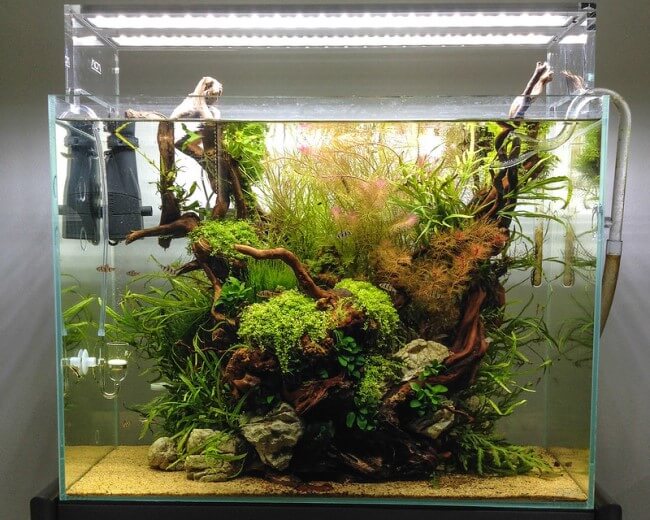
I know plenty of fishkeepers that don’t use covers and they use the extra room for other things. Perhaps you have a large piece of driftwood that is too tall for your aquarium. There’s no reason why it can’t stick out of the top of your tank. A lot of topless fishkeepers have plants that will grow right out of the top of their tank or even some that have plants growing on the top and allow the plant to grow down into their tanks.
Aquarium lids
An aquarium lid is nothing more than something that lays flat and covers your tank. These are usually made of glass and will have a hinge in the middle that allows you to lift one end to feed your fish or provide access for maintenance. Generally, this type will leave a gap to provide ample room for power cords, air hoses, filter tubes, and hang-on-the-back filters. This style also comes with a plastic piece that fills this gap and is easily cut to size to fit around any equipment that you’re using. In the end, the top of your tank will be gapless and there will be no space for fish to jump out. Glass lids are also great for resting your lights right on top. This will prevent your lights from getting wet and also allow light to go in your tank, where it’s needed.
Aquarium lids can also be plastic and are more common on smaller tanks. I’ve seen some with hinges that work in the same manner as glass lids and some without. Ones without lids will need to be removed usually during your regular maintenance. Most plastic lids without hinges will have a small hole in the top for easy feeding as well. Although, I did have one back in the day that didn’t even have that option on an old Betta fish tank.
Some plastic lids can also come with built-in lighting or may incorporate a hood for lighting.
Aquarium hoods
When it comes to aquarium hoods, think about lighting. There are 3 ways to have lighting over your tank. You can have a long light that extends the entire length of your tank and rests on the edge with legs. You can also hang your lighting above your tank where it will be suspended in some manner. The 3rd way is with an aquarium hood. Just like the hood on your sweatshirt that covers your head, an aquarium hood covers your lights. Even more than that though, it will house your lights and is often what your lights will be attached to.
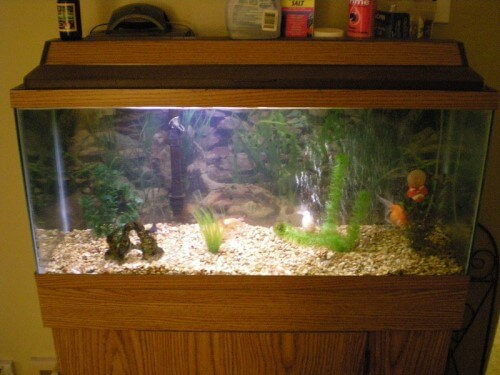
Aquarium hood lighting serves 2 functions. One is to hold and protect the lights and the other is to reflect lighting back down into your tank. The reflection is used for tube lighting that emits light in 360 degrees and will make the light more efficient. Now that doesn’t mean that a hood couldn’t also be used for LED strip lighting, because it most certainly can be. However, since LEDs are directional, the reflection isn’t needed or used.
Aquarium canopies
Canopies serve no real function other than aesthetics. But that’s not me trying to knock them. On the contrary, I think that a canopy can really give your set-up that finished look. They will usually match the style and color of your tank, or at least they should. I’ve been known to have an oak canopy over an all-black stand though so you do whatever you think is best. Canopies are also great at hiding any equipment that you may have on your tanks such as lighting, or cords and hoses sneaking out of the back. It’s probably the best and only solid method for obtaining that clean finished look in a stand-alone aquarium.
Keep in mind though that canopies can get pretty pricey and out of all equipment available for your fish tank, this is the least important. In fact, it’s not important at all other than appearance. So, if you’re working with a budget, I’d suggest that you save your money here and invest it into better a better filter or lighting.
Conclusion
As you can see, not all aquarium covers are the same. They each have their own purpose and function and not all will work with all set-ups. Also, covering your aquarium isn’t needed in some instances and in fact may not even be desired. Just remember, lids cover your tank, hoods cover your lights, and canopies cover it all. Now that you know all about the different types of covers, you’ll be able to make the right decision for you and your needs.
Sharing is caring!

